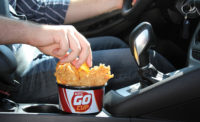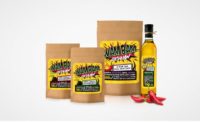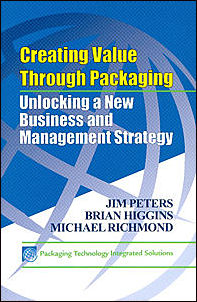Designing For the Contradictory Consumer
Designing For the Contradictory Consumer
By Jonathan Ford
Today’s ‘multi-modal’, eclectic consumer presents a challenge to brand owners and package designers alike.
“The great struggle in life is not between good and evil… but the desire for certainty and the desire for freedom. Freedom and certainty cannot equally co-exist. The more you have of one, the less you have of the other.” — Tim Robbins, ‘Even Cowgirls Get the Blues’
The modern world is a place of paradox and nowhere more so than in the emerging economies. Money, it seems, is a key factor in the global melting pot of certainty and freedom.
In the space of the past 60 years, Westernized countries have moved from industrial to service economies; from mechanical to digital; and from mass to personal. Meanwhile, social mobility, the break-down of outmoded ideas such as ‘a job for life,’ or a ‘woman’s place is in the home,’ and the growing wave of informality governing the way we interact and socialize, have all contributed to undermine the notion of ‘right place, right time’.
Perhaps more than anything, though, it is mass-affluence that has brought about the biggest change in the certainties and freedoms involved in consumer buying behavior. Greater spending power in millions of pockets means that while people have always had dreams of material comfort, they have never had more potential to fulfill them than they do right now. Like it or not, where luxury brands were once the preserve of the super-rich, they are now in the consciousness (not to mention the homes and lifestyles) of millions of consumers.
This rising wealth of citizens in the developed world now offers the potential for them to express the range of their individuality and to act it out modally to match their moods, circumstances and social settings—trading up or trading down, but rarely in the middle ground in between.
At either end of the price spectrum, brands face a challenge: the notion of ‘one for all’ that grew up in the age of the mega-brand is now dead. In effect, brands now exist in an ‘hourglass’ reality with the super-cheap and super-premium co-existing happily, leaving little or no ‘mental space’ or share-of-wallet for middle-market brands.
The United States has led the mass-affluence trend of trading-up, with brands such as Starbucks, Whole Foods, Martha Stewart and Apple tapping into Americans’ desire for ‘something better’, a notion that has swept the nation and the world beyond—from Europe and Japan to the emerging mega-economies of China and India.
At the same time, affluent Americans are as obsessed with “discount” as they are with the latest SUV, or with the restaurant-grade Viking ranges and Sub-Zero fridges that adorn their custom kitchens. So it hardly comes as a surprise to find discounters such as Target (pronounced in a display of irony as ‘Tar-zhay’) and Jet Blue making it into the Top 10 of America’s most beloved brands, alongside classics such as Nike and Coke.
Navigating new waters
So what characterizes these emerging consumers, who are—in contradictory style—both individual and collective in make-up? And how can we hit a target that shifts between such polarities?
The greater the personal freedom, the greater the opportunity for individuals to be who they want to be. The Internet has propelled this ‘how to’ and ‘how not to’ culture even further, with a stream of information available at any time of day or night.
The message? As if we didn’t already know, it is to get right next to consumers and acknowledge just how much they want to learn about themselves when making a brand choice. The emerging contradictory consumer wants to feel like he is learning, without exposing his ignorance. Brand owners need to directly involve consumers in product and packaging development (and we’re not talking about focus groups) and, at the same time, impart a sense of learning from the experience.
The other interesting thing about this contradictory consumer is that she matches styles in the way she buys at the low and high end of the premium-discount spectrum. The emerging generation of adults, in particular, is extremely tolerant of lifestyle differences and widely eclectic in its personal and group style.
If the dominant themes of the ’80s and ’90s were the quest for individuality, then the current era is a time when people, especially the younger generation, take ‘individuality’ and ‘difference’ as givens. They are now searching for ways of coming together, but still very much as individuals.
This makes for a consumer that has both a fearless early adopter attitude and an intrinsic sense of order and balance.
Retailers such as Sephora have understood another key point about contradictory consumers—although they are information-hungry, well-informed buyers, they dislike the drudgery of plowing through vast swathes of confusing product fixtures. They prefer, instead, the option of ‘edited’ choice, where the retailer has carefully selected only the items within a given brand portfolio they know their consumer demographic will enjoy; pared down choice in a ‘visually’ harmonious setting.
It is hardly surprising in this context that pared down iconographic style has also begun to dominate design—the beauty and purity of Aveda or the aquatic calm of Shisheido’s Qiora Spa. These examples have one contradictory element in common: they represent a new type of naked simplicity, juxtaposed with intricate and sensual hot spots on pack.
In fact, package design has a key role in targeting the contradictory consumer; it serves as both a tool and a language to reconcile contradiction by simultaneously appealing to our split personalities. In this modal society, it is increasingly important and, indeed, possible to appeal to a number of needs at the same time and, in effect, design for the contradictory consumer.
Designing for the contradictory consumer
But what is our starting point in designing for the contradictory consumer? First, we need to think in terms of “evolution”. No design should be completely static; if possible, there should be an element that is continually changing. Imagine an original design that has the capability to evolve as it is used, much like the FUSE phone that changes shape to fit the individual’s hand.
Designing for the contrary consumer should, in fact, allow for the consumer’s participation in the creation process. In essence, no design should be created by the designer 100 percent. The opportunity to personalize a product, to add a ‘me’ touch, is the truest form of contradiction.
The element of ‘mystery’ is also engaging to the growing number of contrary consumers. We all love discovering something. When there is ‘exploration’ there is often delight; complexity can be expressed in layers. Just think of an interactive touch screen, or a museum or art gallery, that allows you to delve in at different levels depending on your needs. Here, the consumer decides for himself how much background to ‘buy’ into—power to the buyer, not the seller. So, designing for the contrary consumer will probably have an element of surprise; an unexpected side that challenges expectations and involves a change of context.
The recent design of the Absolut Vanilia bottle demonstrates how an ordinary, expected flavor can engage consumers. The graphics were executed on a sensual matte bottle, which re-introduces some of the mystery and luxury that vanilla once enjoyed. At the same time, it evokes a globally understood sense of purity and refinement—a case of consistency with personality.
Of course, design that imbues a sense of contradiction should never undervalue the power of humor. The clever use of wit can add a down-to-earth or human voice to a largely functional product, providing a ‘cross-stitching’ of the emotional with the functional. The hair and beauty brands Not Soap and Just Radio and the UK Smoothies range are all perfect examples of brands that, in these uncertain times, recognize value in poking fun at themselves.
Indeed, copy has come to the forefront as a product driver. For example, cosmetics brand Philosophy promotes “back of pack” information on the front of its products and uses creative and witty copy to convey product benefits. The challenge in the machine age is to add a human dimension to mass production.
De-styled style is en vogue. Design will be stripped to its most simple and natural form—less is more, so to speak. Again, a sense of contradiction is added through a twist in context of the smallest detail or by allowing consumers to add their personal touches to create a final ‘me’ layer to a brand.
Simple, clean design does not however imply ‘average’ design. The world equates average with blandness. As we already stated, the middle ground is losing out to the extremes of high and low. Increasingly, we are looking for super-luxury or for a super-deal— either way, we are attracted by a risk factor, albeit a ‘perceived’ risk.
For the contradictory consumer, it is all about perception. For the brand owner, contradiction tends to imply speed—showing different aspects of its personality (or perceived aspects) according to the zeitgeist of the time. Cracking the success code is in the art of knowing what’s next: correctly gauging the ‘bubbling’ undertones.
The way forward
Regardless of the choice of color, material or copy, designing packaging for the contradictory consumer involves an understanding of the consumer mindset. Death to clichés and stereotypes, nothing is sacred now. Each of us, the world over, will cherry-pick the best of the past while increasingly choosing to go our own way.
Going your own way involves a logical point of balance between the contradictory compass points of certainty and freedom. Designing for the contradictory consumer will be a case-by-case scenario, where the brand in question will determine the logical balance between certainty and freedom and emotion and function to transfer knowledge and desire. The challenge will be to recognize the changing personalities of people and to mirror such personalities in design. That is the way forward. BP
The author, Jonathan Ford, is a Creative Partner at Pearlfisher (London and NY). Contact him at jonathan@pearlfisher.com.
Looking for a reprint of this article?
From high-res PDFs to custom plaques, order your copy today!







